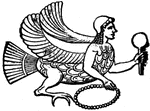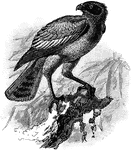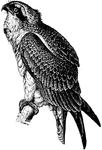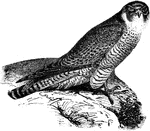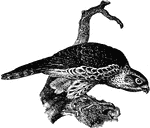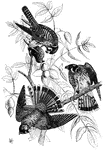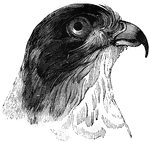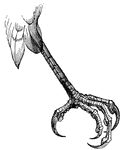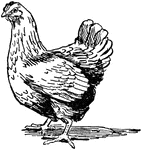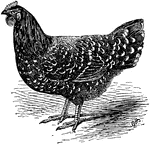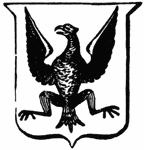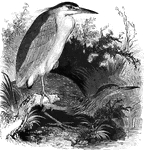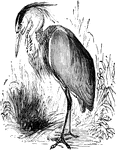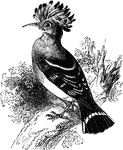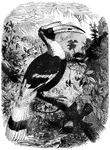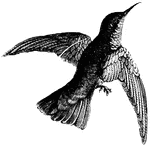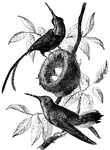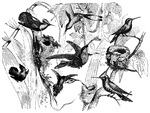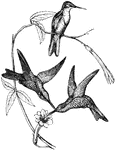
American Marsh Hawk
Also known as the American harrier, the marsh hawk (C. Hudsonius) is nineteen to twenty-one…
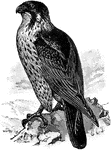
Duck Hawk
The Peregrine Falcon (Falco peregrinus), also known simply as the Peregrine, and historically as the…

Marsh Hawk
Birds of prey usually have stout, hooked beaks and sharp, curved claws, fitting them for clutching and…

Night Hawk
Found in America, Mexico and the West Indies, this species averages nine to ten inches in length and…

Two Sparrow Hawk in a Large Flat Nest of Twigs with Five Young Sparrow-Hawk Beside a Tree Trunk
"Accipiter nisus, the Sparrow-Hawk, which breeds throughout Europe, North Africa, Asia north of the…
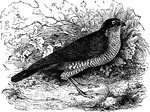
European Sparrowhawk
Resembles the American sparrow-hawk, feeding primarily on small birds and quadrupeds, as well as domesticated…

The Superficial Muscles of a Hawk
In birds the muscles system is remarkable for their marked line of attachment to their tendons. Labels:…
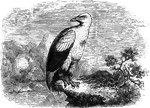
Vulture Hawk
Genus Gypohierax, is about the size of a goose, and is found in Western Africa, particularly…
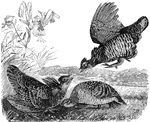
Prairie Hens
Prairie hens feed on grasshoppers, wheat, corn, seeds, and the buds of trees. They are also known as…
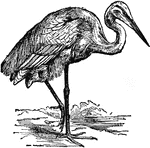
Heron
"Heron is the common name of birds of the genus Ardea. The herons are distinguished by having a long…

Heron
A great blue heron, commonly found in tropical areas like Florida. They belong to the order Grallatores,…

Common Heron
"The most typical forms of Ardea (Common Heron) are large slaty-coloured birds, varied by black, rufous,…

Gray Heron
Also known as the crested heron, the European gray heron ranges from Middle and Southern Europe into…
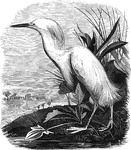
Great White Heron
White, often with a yellowish tinge, the great white heron of America closely resembles its European…

Purple Heron
"twenty-nine inches long; slate-gray above; dark maroon and slate-gray beneath ; found in the warmer…
The Grey Heron
"The Grey Heron in full flight. In the heron the wings are deeply concave, and unusually large as compared…
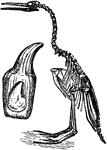
Hesperornis
Hesperornis is an extinct genus of flightless aquatic birds that lived during the Santonian to Campanian…
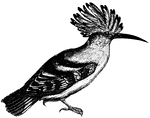
Hoopoe
The hoopoes are easily recognized from the double range of plumes which form an arched crest on their…
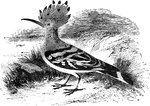
Hoopoe
Widely distributed over Africa, Asia, and Europe, the hoopoe has a distinctive crest of feathers on…
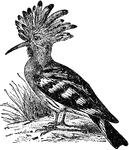
Hoopoe
An old world bird that is distinguished by it's vibrant plumage and downward-curving bill, and bright…

Hornbill
"Hornbills are a remarkable group of birds confined to Southern Asia and Africa, akin to the kingfishers…
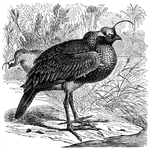
Horned Screamer (Palamedea Cornuta)
The Screamers are inhabitants of South America. They live isolated, in pairs, and are mild and peaceful…

Wing-Banded Hornero
The Wing-Banded Hornero (Furnarius figulus) is a bird in the Furnariidae family of ovenbirds.

Human Leg (Front View), and Comparative Diagrams showing Modifications of the Leg
This illustration shows a human leg (front view), and comparative diagrams showing modifications of…
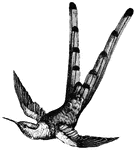
Bar-Tailed Hummingbird
The nest of the hummingbird is a masterpiece. It is about half the size of an apricot.
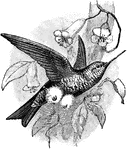
Coppery-Bellied Puffleg
The Coppery-Bellied Puffleg (Eriocnemis cupreoventris) is a hummingbird in the Trochilidae family.
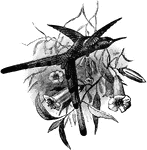
Red-Tailed Comet
A species of hummingbird, the Red-Tailed Comet (Sappho sparganura) is native to South America.
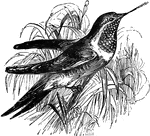
Ruby-Throated Hummingbird
The ruby-throated hummingbird (Archilochus colubris) is a bird with a long beak and rapid wings. This…
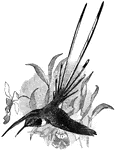
Peruvian Sheartail
The Peruvian Sheartail (Thaumastura cora) is a hummingbird in the Trochilidae family of hummingbirds.

White-Tipped Sicklebill Hummingbird
The White-Tipped Sicklebill (Eutoxeres aquila) is a bird in the Trochilidae family of hummingbirds.

Supercolious Hummingbird
The supercolious hummingbird, noted for it's unusually large nest. It is native to Brazil.
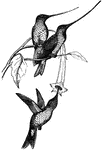
Hummingbirds
A group of humming birds with particularly long and narrow beaks, well-adapted for sipping nectar from…

Hummingbirds
Four humming birds, two of which are resting on a branch, while the other two cavort in the air above.
